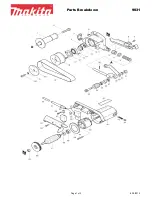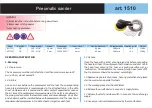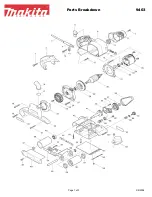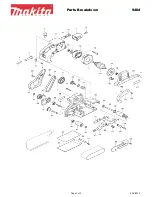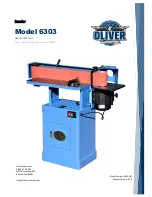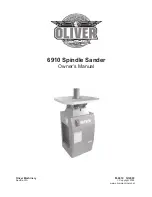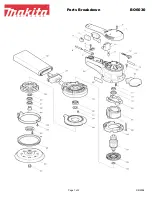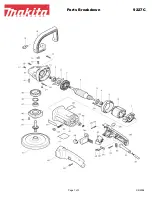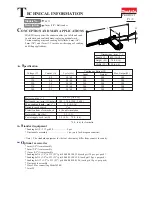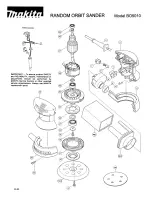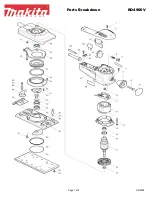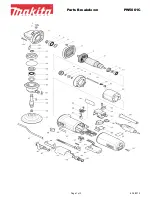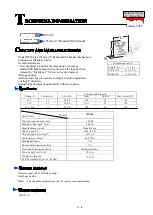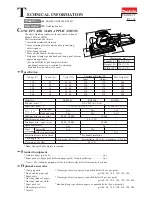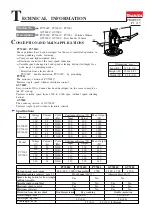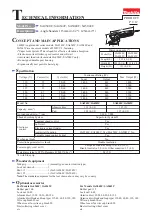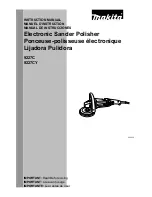
9
floor sander abrasive (120 grit) face up to a solid
flat board that is large enough to stand on and
operate the edger. Place the board on a flat even
floor and the edger on top of the board with the
pad over the abrasive. Do not fit an abrasive
disc.
CAUTION - make sure that the Clamp
Bolt (Ref.59) is secure and properly
tightened
4.
Connect the edger to the power supply, stand on
the board and tip the edger back and switch 'ON'.
Carefully lower the edger so that the sanding pad
comes into contact with the abrasive. Move the
edger from side to side across the abrasive under
its own weight for a few seconds. Tip the edger
back and switch 'OFF’
5.
Disconnect from the power supply and check the
condition of the sanding pad. You should witness
an even surface with no high or low spots around
the whole surface of the sanding pad in the
contact area as shown in the diagram below.
Note: Do not hold the edger in place, always keep it
moving across the abrasive sheet. Do not over trim
the sanding pad or you will reduce it's life. Do not lift
or force the edger while trimming the pad, allow the
edger to move under it's own weight. The sanding pad
minimum tread depth is 5/32“.
Reasons for Trimming the Sanding Pad
Trimming the Sanding Pad
1.
As part of routine maintenance.
2.
The sanding pad has been damaged.
3.
The sanding pad has been replaced.
4.
The sanding pad has been removed to gain
access to other components or to remove an
obstruction from the dust pick-up.
5.
The castors have been replaced and/or adjusted.
1.
Disconnect the edger from the electrical supply
and place the edger on a flat, smooth surface
such as a work bench. Visually check to see that
only the front of the sanding pad is in contact
with the surface it is standing on. That is, the
castors are adjusted so that the edger is ‘tipped’
forward.
2.
Use a piece of paper or 0.005" feeler gauge to
check under and around the sanding pad to
confirm that only the front part of the sanding
pad is in contact with the surface it is standing on.
The correct contact area is illustrated in the
diagram below.
If the contact area is wrong or can not be
identified accurately check and adjust the
castors as detailed below in - Adjusting the
Castor
3.
To trim the sanding pad fix a piece of fine grit
CONTACT AREA
Sanding Pad Static Contact Area
Sanding Pad Trimmed Contact Area



















